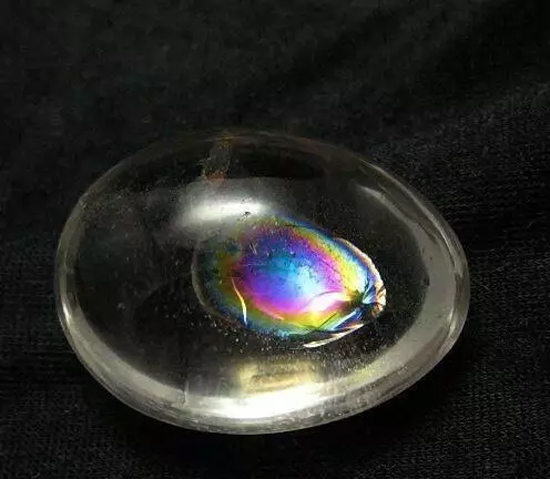Nine special optical effects of gemstones
Different gemstones have different colors, lusters, etc., and because of their unique physical structure, gemstones have some special optical effects under illumination.
1, starlight effect
The arc-shaped convex gemstone is illuminated by a point source, and the surface of the gemstone exhibits an optical phenomenon of four-, six-, or twelve-shot star-like rays. The starlight in the night sky is called the starlight effect.
Common gemstones with starlight effects include star ruby, star sapphire, and starry hibiscus.
2, cat eye effect
A bright band of light on the surface of a gemstone under the illumination of a gemstone. When the gemstone is turned, the band moves with it, like a cat's slender scorpion, known as the cat's eye effect.
A gold emerald with a cat's eye effect is called an opal. Other common gemstones with cat-eye effects include gold-green cat eyes, jasper cat eyes, and tourmaline cat eyes.
3, color change effect
Gemstones display different colors under different light sources such as daylight or light, called the color change effect of gemstones. Known as "the emerald of the day, the ruby ​​of the night."
The gold emerald with a color changing effect is turned into a stone. Other gemstones with a color-changing effect include discolored sapphires and the like.

4, color change effect
Under the illumination of white light, a phenomenon of multicolor transformation is simultaneously displayed on the same gemstone. When you turn a gemstone or light source, you can see a variety of colors constantly changing, sparkling, and rainbow-like colorful chromatograms.
The color change effect is more common in opal.
5, moonlight effect
Moonstone is a micro-inclined feldspar with lattice-like twin crystals. The two sets of double-crystal lines that are approximately vertical to each other scatter the incident light, and the dense scattered light is concentrated together. It is a hazy color, like moonlight, so it is called moonlight. effect.
The micro-plagioclase with moonlight effect is called moonstone.
6, sand gold effect
When the transparent to translucent gemstone contains many opaque tiny solid inclusions, it is reflected and shimmered under the illumination of light. This phenomenon is called the gold effect.
Common gemstones with a gold effect are Sunlight Stone and Dongling Jade.
7, the fluorescence effect
Luminous gemstones with fluorescence or phosphorescence, the most representative gemstone is fluorite, known as the "night pearl." Fluorite can emit light for several tens of hours after being illuminated by fluorescent lamps. This kind of light is relatively weak, and it is invisible during the day and bright at night.
Fluorescence is one of the important bases for identifying natural gemstones.

8, the color effect
There are two situations known as the stun effect:
(1) When the gemstone such as labrador is rotated to a certain angle, the whole sample is illuminated, and it can be blue, green and gold, yellow, purple, red, etc., which is called the halo effect. Labradorite faint labradorite.
(2) The color of the pearl is the color of the body color, the accompanying color, and the faint color. The halo of the pearl refers to the driftable rainbow color formed by the surface of the pearl or the lower layer of the surface. It is a special brilliance formed by the reflection of the light reflected from the surface of the pearl and the reflection of light from the bead layer of the pearl subsurface.
9, thin film interference effect
Some gemstone crystals have a very thin cracked surface inside, and the light interferes with the cracked surface, giving the crack surface an optical effect of colorful light, called the thin film interference effect.
Girls Princess Dress,Girls' Sweet School Dress,Children'S Seaside Holiday Princess Dress,Cotton Children'S Bow Dress
Chaowei Four Seasons Garment Co., Ltd. , https://www.smockingdress.com